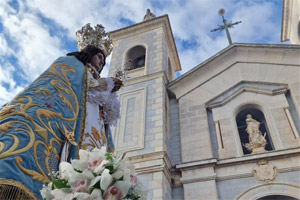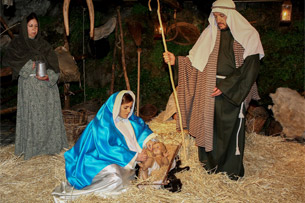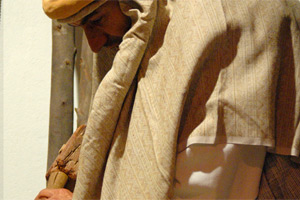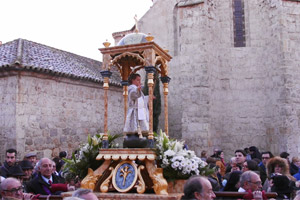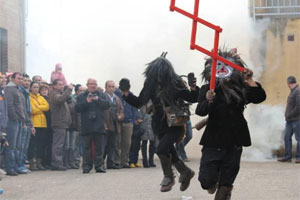Emérita Lúdica
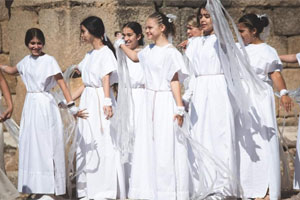
What is Emérita Lúdica about?
The festival of "Emérita Lúdica" is an annual celebration that takes place in the city of Mérida during the month of June. It is a multidisciplinary event that aims to promote the dissemination of knowledge about the Ancient Roman era. The festival involves various groups of historical reenactment and cultural entities related to the history of Rome and Mérida.
During the Emérita Lúdica festivities, the city transforms into a vibrant stage of ancient Rome. Numerous activities and events related to Roman culture are held, such as parades, theatrical performances, gladiator battles, Roman circus shows, chariot races, Roman attire contests, banquets, themed markets, and many other recreational activities.
The city of Mérida boasts an exceptional Roman archaeological heritage, and these festivities offer a unique opportunity for both residents and visitors to immerse themselves in history and relive the splendor of ancient Emerita Augusta.
The Temple of Diana is the epicenter of the main festival activities, although events also take place in other iconic locations in the city, such as the portico of the forum, the Roman Museum, the Méridas del Mundo park, the Arch of Trajan, the Arab Alcazaba, and the amphitheater, where impressive gladiator battles are staged. Notable local historical reenactment groups include Emerita Antiqva, Ara Concordia, Lvsitania Romana, Lvporvm Celtiberiae LevKoni, and Emeritae Lvdvs Gladiatorum.
The Emérita Lúdica festivities usually last several days and attract numerous tourists and Roman history enthusiasts. During this period, different activities and events for all ages are organized, allowing attendees to experience Roman culture and traditions up close.
Since 2014, the festival has included the "Ruta de la Tapa Romana Sentia Amarantis," a gastronomic experience that follows the recipes from Marco Gavio Apicio's book "De re coquinaria," offering dishes inspired by Roman cuisine. Several establishments have participated in different editions, creating a unique culinary atmosphere and attracting history and food lovers alike.
It is important to note that specific details of the Emérita Lúdica festivities may vary from year to year. Therefore, it is recommended to consult the program of activities published on fiestapopular.com each year to obtain detailed information about the dates and programs of each edition's festivities.
Revived gastronomy and other details of everyday life
The Emérita Lúdica festival in Mérida features activities and events related to Roman culture. For example, there are live demonstrations of Roman cuisine, and visitors can even taste the Roman wine called "mvlsvm". Notably, the Roman Tapas Route "Sentia Amarantis" involves local hospitality establishments decorated in a Roman theme.
There are also hotel decoration contests for rooms and courtyards. Additionally, pubs located in the central area offer a nightlife atmosphere in the Roman style.
The event program has included a recreation of a Roman funeral by the Ara Concordiae Association, as well as other scenes from everyday life in the Roman Empire, such as propitiatory rituals and activities of the Roman legions. Gladiator battles, slave auctions, recreations of a Roman wedding, ceremonies following the birth of a child and the donning of the toga virilis, as well as exhibitions of medicine, magic, perfume making, and board games.
Participation in the festival is open to local reenactment associations and those from other Roman cities, and every year more citizens dress up as Romans. There is a workshop available for the making of Roman costumes, advised by archaeologists and technicians from the Monumental City Consortium, who also provide guidance on hairstyles and makeup to maintain the aesthetics of Mérida's time as Colonia Iulia Augusta Emerita, when it was the capital of Roman Lusitania.
What to see in Mérida
In Mérida, there are plenty of historical and cultural sites to visit. Here are some recommendations on what to see in Mérida:
- Roman Theater: One of the most impressive monuments in Mérida and one of the best-preserved Roman theaters in the world. It was used for theatrical performances and public events during the Roman era.
- Roman Amphitheater: Another prominent archaeological site, the Roman Amphitheater was used for gladiator fights and other Roman entertainment events.
- National Museum of Roman Art: This museum houses an impressive collection of Roman art and artifacts, including statues, mosaics, sculptures, and other historical objects from the Roman era.
- Aqueduct of Los Milagros: One of the best-preserved Roman aqueducts on the Iberian Peninsula. Its arches are impressive and represent Roman engineering in supplying water to the ancient city of Mérida.
- Temple of Diana: Located in the center of Mérida, the Temple of Diana is an important symbol of the city. It is a Roman temple dedicated to the goddess Diana and is surrounded by picturesque buildings.
- House of Mitreo: This Roman house features beautiful mosaics and frescoes depicting mythological scenes. It provides a glimpse into daily life in ancient Roman Mérida.
- Roman Bridge: The Roman Bridge crosses the Guadiana River and is an impressive testament to Roman engineering. It offers panoramic views of the city and is a great place for a stroll.
- Roman Circus: The Roman Circus of Mérida was a venue for chariot races and other sporting events. Although only some remains are preserved today, you can still appreciate its magnitude and original structure.
These are just some of the main attractions to visit in Mérida. The city also has other monuments and museums that offer a fascinating look into its rich Roman history.
Crafts and Recommended Shopping
In Mérida, there are several options for crafts and shopping that you can explore. Here are some recommendations:
- Ceramics and Pottery: Ceramics and pottery are traditional crafts in Mérida. You can find beautiful handmade pieces such as dishes, vases, decorative tiles, and ceramic figurines. The area around Plaza de España is known for hosting workshops and ceramic shops.
- Roman Jewelry: Mérida offers a unique selection of jewelry inspired by the Roman era. You can find pieces with Roman designs and motifs, such as bracelets, rings, necklaces, and earrings. These jewelry items are charming reminders of the city's Roman history.
- Embroidery: Embroidery is another prominent craft in Mérida. You can find hand-embroidered items such as handkerchiefs, table linens, beddings, and other products with beautiful traditional designs and patterns. Some specialized shops offer high-quality embroidered products.
- Leather Goods: Mérida has a long tradition of producing leather goods. You can find items such as belts, bags, wallets, and leather footwear of excellent quality. These products are crafted by local artisans and reflect traditional craftsmanship.
- Gourmet Products: Mérida is also known for its gourmet products, such as olive oil, wine, and cured meats. You can find specialized stores where you can taste and purchase these local products, ideal for taking a piece of Mérida home with you.
In addition to these recommendations, the city has markets and local shops where you can discover other crafts and unique products. Remember that crafts and shopping options may vary depending on the time of year and product availability, so it's advisable to visit local shops and markets during your stay in Mérida to explore the most suitable options.
What to eat in Mérida
The typical popular cuisine of Mérida offers a delicious blend of traditional flavors and dishes inspired by Roman cuisine. Here are some examples of dishes and gourmet products you can enjoy in the city:
- Tapas: Like in many parts of Spain, tapas are very popular in Mérida. You can try a variety of local tapas, such as Iberian ham, sheep cheese, olives, Spanish omelette, and marinated anchovies. Many bars and restaurants offer tapas as accompaniments to drinks.
- Migas: Migas is a traditional dish from Extremadura, and Mérida is no exception. It is made with stale bread, crumbled and fried with olive oil, garlic, and spices. It is often served with grapes or pieces of chorizo to add flavor.
- Roast Lamb: Roast lamb is a standout dish in Mérida's gastronomy. It is slow-cooked in the oven with herbs and spices, resulting in a juicy and tender flavor. It is a traditional dish that is particularly enjoyed on festive occasions.
- Lamb Caldereta: Another specialty of the region is lamb caldereta, a traditional stew that combines lamb, potatoes, peppers, onions, and tomatoes. It is a hearty and comforting dish, perfect for the colder months.
- Queso de la Serena: La Serena is a region near Mérida known for its sheep cheese. This cheese is creamy and smooth, with a distinctive and slightly spicy flavor. It can be enjoyed on its own or as part of a cheese platter.
- Pestiños: Pestiños are a typical sweet treat in the region, especially popular during Holy Week. They are small pieces of fried dough soaked in honey and sprinkled with sugar and cinnamon. They are delightfully sweet and crispy.
- Wine from the Extremadura Region: Mérida is located in the wine region of Extremadura, known for its quality wines. You can try red, white, and rosé wines produced in the area, which usually have intense and distinctive flavors.
These are just some examples of the typical popular cuisine of Mérida. The city offers a wide variety of restaurants and bars where you can enjoy these dishes and discover other local flavors. Don't forget to explore and taste the rich culinary offerings during your visit to Mérida!

